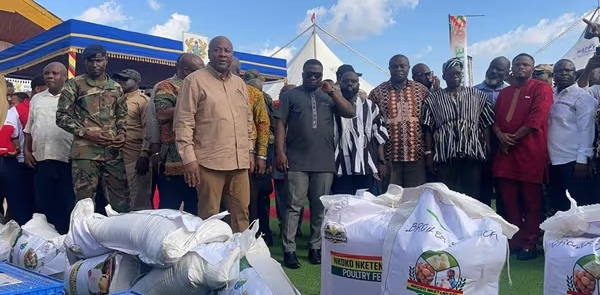In a bid to stabilize maize prices and protect farmers, President John Dramani Mahama has directed the Finance Minister, Dr. Cassiel Ato Forson, to provide an additional GH₵200 million for the purchase of surplus maize nationwide.
The decision, announced during the Nkoko Nkitinkiti Poultry Initiative launch in Kumasi, expands on the earlier GH₵100 million maize market intervention, which the President said did not fully address the glut’s impact.
With the new funds, NAFCO is expected to step up purchases of maize, rice, and eggs from farmers facing the impact of the glut. The goal, President Mahama explained, is to keep harvests from going to waste while strengthening Ghana’s food reserves.
“I have directed the Minister of Finance to release an extra GHCC200 Million to buy and stock the excess maize so it can serve the country in the future “, He said the initiative fits into government’s larger vision of building a sustainable and secure food system capable of withstanding future supply challenges.
To address the rice and egg glut, the government has tasked NAFCO with purchasing locally produced rice and instructed the School Feeding Programme to include eggs in students’ meals.
President Mahama said the move underscores his government’s pledge to back farmers and stabilise Ghana’s food system.
President Mahama announced immediate interventions to mitigate the impact of the rice and egg glut, instructing the National Food Buffer Stock Company to purchase local rice and directing the School Feeding Programme to include eggs in student meals.
He reiterated his administration’s goal of supporting producers and stabilising markets, saying, “no Ghanaian farmer should suffer losses because they produced in abundance.”
Despite an 18% rise in rice output—reaching 900,000 metric tonnes in the 2025/26 season—Ghana’s consumption level of 1.8 million metric tonnes leaves a self-sufficiency ratio of about 50%, underscoring continued dependence on imports and structural challenges within the sector.






